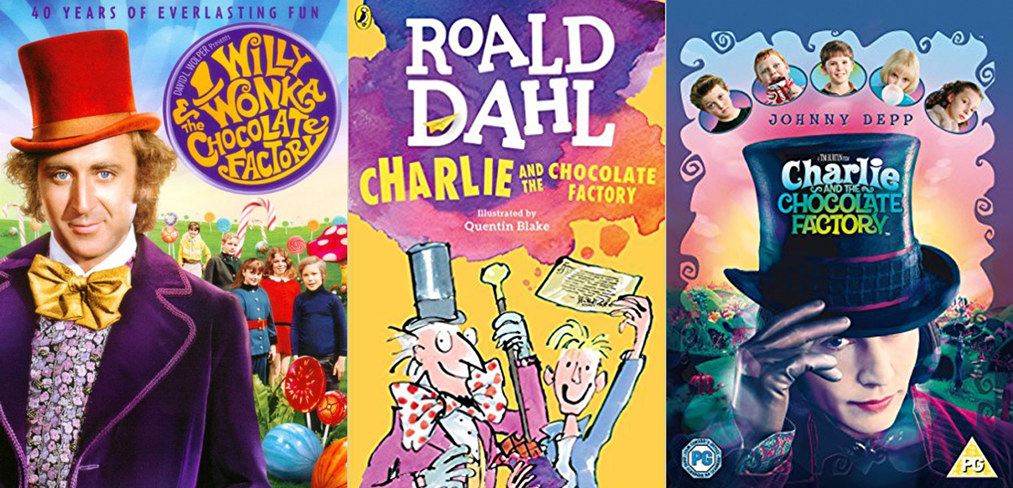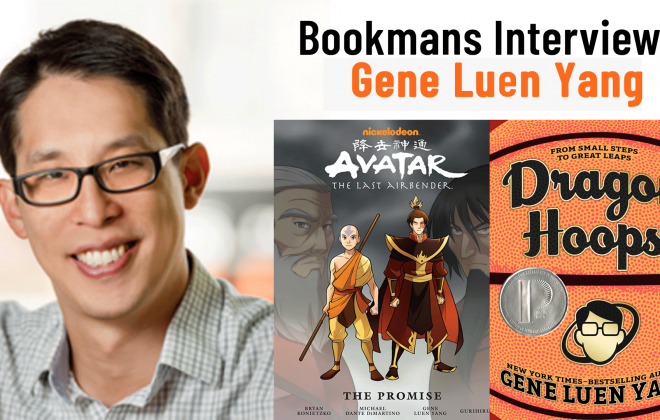The Art of Adaptation
What does it take for a movie to be considered a good adaptation? Is it how faithfully it follows its source material? Is how close it can keep the initial vision of its creator intact while keeping the story both new and exciting? Or can it be something completely different? Can it in a way be a bridge for a new generation of artists to have the room and freedom to express themselves and update the story for a new audience? Let’s examine the art of adaptation through the lens of Charlie and the Chocolate Factory.

Checklist
Nostalgia might play a part in how successful you deem an adaptation to be. If you’ve grown up with a story, that story’s characters and moments can only be as faithful as your interpretation. We know how they *should* act because we want to see them as we know them. When an adaptation arrives and changes the motivation of a character or the story, it’s upsetting. We carry a mental checklist in our minds of which notes need to be hit. If something from said list is missing, the movie is clearly not as good as the source material.
On the other hand, if the movie hits all the check mark, it can feel somewhat stale and predictable. Is there a good balance to have when it comes to making a movie? Let’s see if Charlie and the Chocolate Factory can help us decipher the adaptation riddle.
Book Vs. Movies
There have been two film adaptations of Roald Dahl’s book Charlie and the Chocolate Factory, 1971’s Willy Wonka and the Chocolate Factory and the 2005 Charlie and the Chocolate Factory. They both take inspiration from the book but go interpreting it in different ways. Each chooses to focus on key parts of the story, almost like different sides of the same coin. In the 1971 film, Roald Dahl worked on the screenplay and helped shape it to better fit a film format. Neither adaptation is 100% faithful to the book.
- Charlie: In the book, Charlie is more of a quiet child that does the right thing without question. Compare this to the movie version where he acts as a real child would. He gets upset, even angry at times. It adds more depth to his character and makes him more relatable. Towards the end of the film, when Willy Wonka informs him he lost the contest, Charlie’s good nature shines at its brightest. In the one act of true integrity and goodwill, he hands back the one thing that could help his family, the gobstopper.
- Golden Ticket contest coverage: In the book, most of the coverage of the Golden Ticket contest happens via newspapers. In the movie, you see short whimsical clips of newscasters covering the event in an urgent manner on a global scale.
- Mr. Slugworth: In the original book, Mr. Slugworth mentioned but remains unseen by the group. They expanded his character for the movie to add temptation for Charlie. He tempts Charlie to give him Wonka’s secrets with the promise of assumed riches. This adds an extra layer of tension and a moral dilemma for Charlie.
In the 2005 film adaptation by Tim Burton, Charlie Bucket more closely follows his literary version. Also, Slugworth is almost not around. Wonka himself has the demeanor of a child, which simultaneously feels more and less faithful to Dahl’s book.
So why is one considered a better adaptation than the other? In my opinion, it’s because of the 1971 Willy Wonka made changes that worked in its favor in terms of its medium. It captures the magic of the story while being true to it and making logical changes to help fit its new format.
Time constraints
Many adaptations make changes not to better the story but to format the story to a film’s time limitations. It’s hard to fit an 800-page novel’s story into a 2-hour movie. Most of the time, adapted stories have to be trimmed down. This often means cutting all but the most essential story elements from the movie. That’s also why Slugworth is the only rival for Wonka’s chocolate factory in the movie. If the movies had been truer to the book, they would have included Mr. Fickelgruber and Mr. Prodnose, Wonka’s two other chocolatier rivals. Those interactions could have added a lot of length to the movie versions and ultimately, in a 2-hour format, felt redundant and unnecessary.
Adaptation vs. Inspiration
Both Willy Wonka and Charlie and the Chocolate Factory are fairly close adaptations. They are likely to pass anyone’s mental checklist and either would be satisfying to any fan of Dahl’s original book. However, adapting a book or a game into a movie seems like a daunting task to take on. There are so many reboots and re-imagined stories hitting theaters of late that it has me wondering if it is just the easier choice for directors and movie studios to make. With movie scripts undergoing rigorous rewrites and filmmakers looking to strike a balance between their vision and pleasing the fans, making a truly faithful adaptation is risky business.
Unfortunately, with a film adaptation, these factors can lead to the movie becoming loosely inspired by the source material. While it may not be the preferred way to make an adaptation come to life, it’s a great way to make a story feel familiar while being genuinely unique. That’s a win-win for directors and fans. Directors get to express their vision and fans aren’t disappointed to see their favorite stories inspire a good movie without misrepresenting it.
What do you think some of the best book or game to movie adaptations are? Tell us in the comments below!
Categories
- Art (13)
- Bookie Blog (441)
- Community Events (272)
- Contests & Giveaways (251)
- Core Values (197)
- Films (17)
- Games (46)
- gifts (33)
- In Our Stores (572)
- Inspiration (115)
- Job Postings (2)
- Merchandise (399)
- movie recommendastions (1)
- Musical Notes (243)
- News (176)
- Personality (4)
- Play: A Gamer's Blog (105)
- Quiz (16)
- Reel Chat (287)
- Style (22)
- Tips & tricks (46)
- Uncategorized (183)

